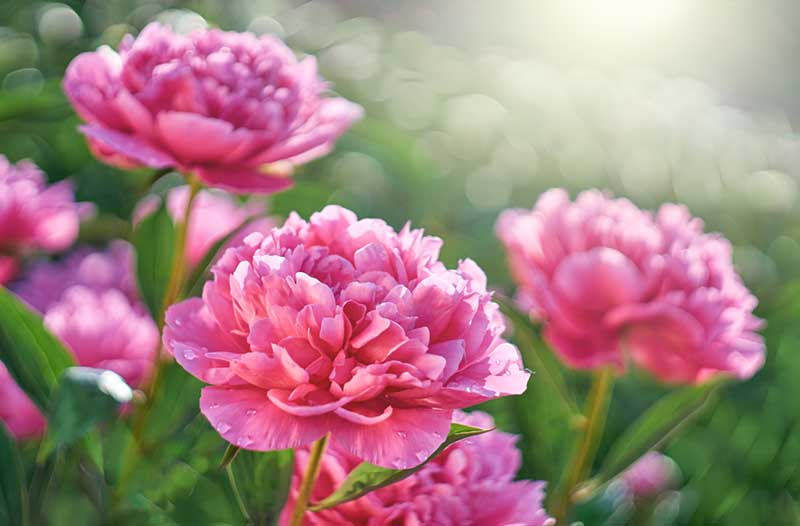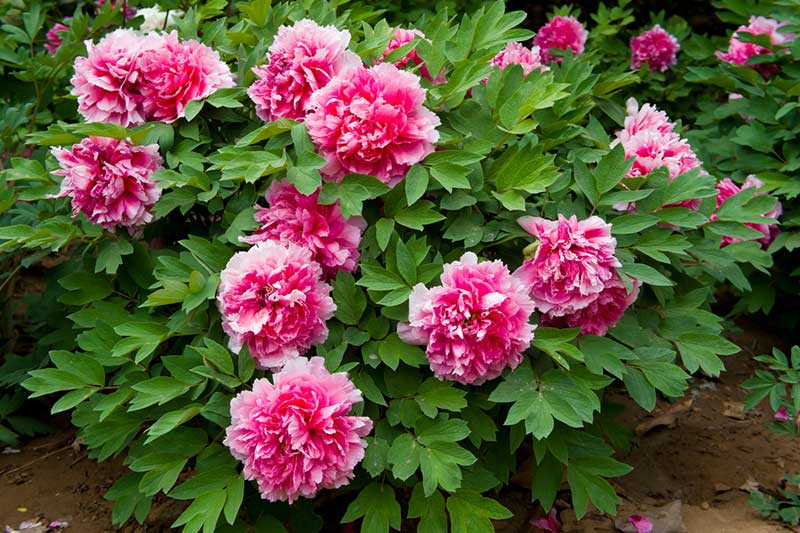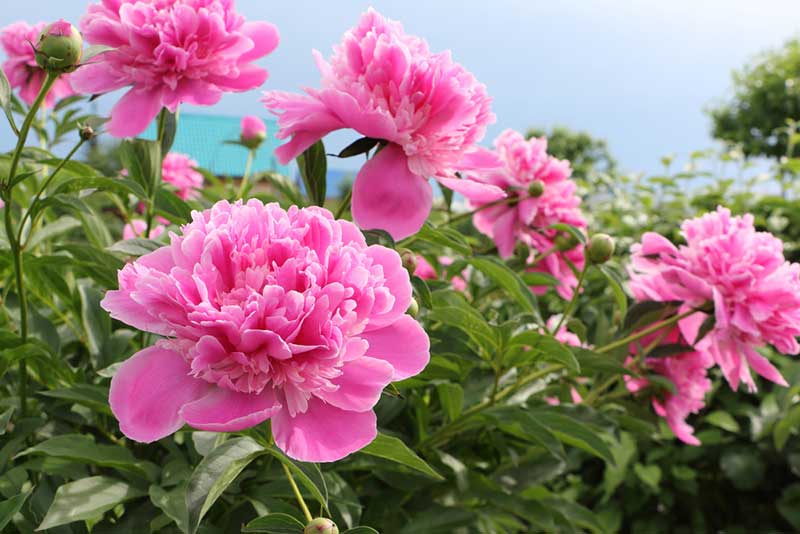Peonies in bloom are a welcome sign that spring has arrived.
There are two large groups of peonies, and each may have a place in your landscaping. The first group is the herbaceous species while the second group is the woody species.
Botanists continue to develop new options every year, so you have plenty of choices to choose from in almost every color imaginable.
You can find single, Japanese, anemone, bomb, semi-double, and full-double herbaceous peonies.
Following some simple care guidelines will allow you to raise these fragrant flowers that can be grown directly in the ground or beautiful containers.
Light and Temperature Requirements
Peonies are a sun-loving plant that prefers between six-and-eight hours of sunlight daily. They are a perennial that will come back the next year after they have died back to the ground in the winter. After they have died back, remove any stems or other flower parts to help prevent disease problems the next year.
Planting Location Tips
Plant peonies where they can get at least six hours of sun regularly. Since they are top-heavy flowers, keep them protected from strong winds, or you may find it necessary to stake them. Peonies do not like to compete for food, so make sure to plant them in areas where larger plants, shrubs, and trees are not heavy feeders.
Watering
When you first plant peonies, you may need to water them once a week unless it rains. Stick your finger into the ground as far as you can get it. If the soil near the second knuckle feels dry, then it is time to water. As your peonies become established, you can back off on watering a little, but you need to water your peonies if there is no natural rainfall for two or more weeks. Be careful when watering that you do not get water on the leaves or the flowers.
Soil
The soil that you use in your container needs to drain very well. In most cases, regular potting soil does not drain well enough. Therefore, consider using 65% topsoil and 35% perlite.
Fertilizer
Peonies are hungry feeders who need food regularly. Start by making sure you mix organic matter into the soil if you are planting in a container or in-ground that has not been used to grow plants in a while. Then, fertilize with a good bulb fertilizer in the spring that is 10-20-20. Using a fertilizer that is high in nitrogen can cause too much dense foliage to appear on the plant. Avoid getting the fertilizer on the crown of the plant or you can damage it.

Growing Peonies from Seeds
Growing peonies from seed can be a five-to-11-year process, so if you are patient, you can grow peonies from seeds. Seeds from hybrid peonies will not grow back like the parent plant. In tree peonies, if you want a plant that looks like its parent, then you need to graft it.
After your peonies have stopped blooming, they will put on seedpods. When the seedpods open, then collect the seeds inside of them. Soak the seeds in a weak solution of hydrogen peroxide for at least 30 minutes. Discard seeds that do not float.
Take the remaining seeds and scratch up the outside harder shell with sandpaper. Place the seeds in slightly moistened vermiculite and place them in a plastic bag in a dark place where the temperature will stay between 75-and-80 degrees. Check the bags every two weeks to make sure that the vermiculite is moist. Leave the seeds in the dark for up to three months until they germinate.
Next, move the seeds to an area that will stay between 34-and-50 degrees. Wait for roots to appear, followed by a leaf. This process may take several weeks. Once a leaf appears, move your peonies to an area that stays between 70-and-75 degrees. Once the plant has three leaves, place it in the ground or in your favorite container.
Growing Peonies in Containers
Keeping two main ideas in mind will allow you to grow beautiful peonies in containers. Peonies need a lot of room because they have an extensive root system. Never plant a young peony in a pot that is less than 18-inches deep, and larger peonies need a container with at least a 24-inch diameter.
The second thing to remember is that peonies must be kept moist, but they must not stand in water. While choosing a well-draining pot is essential, you need to use soil that will allow water to escape freely.





